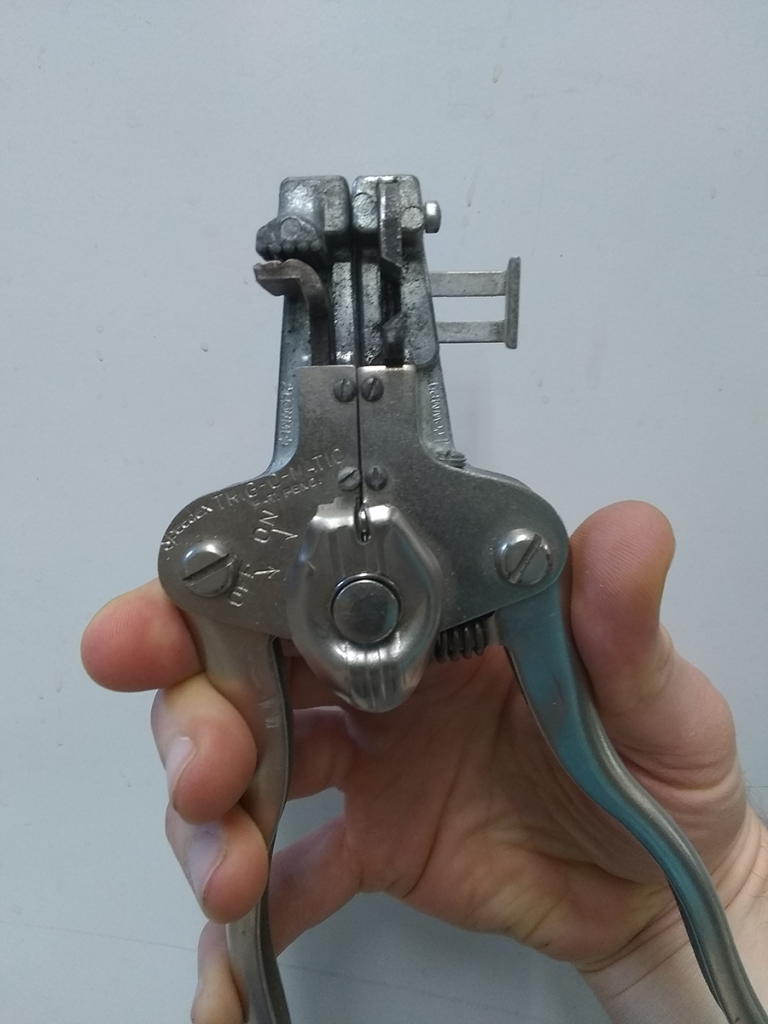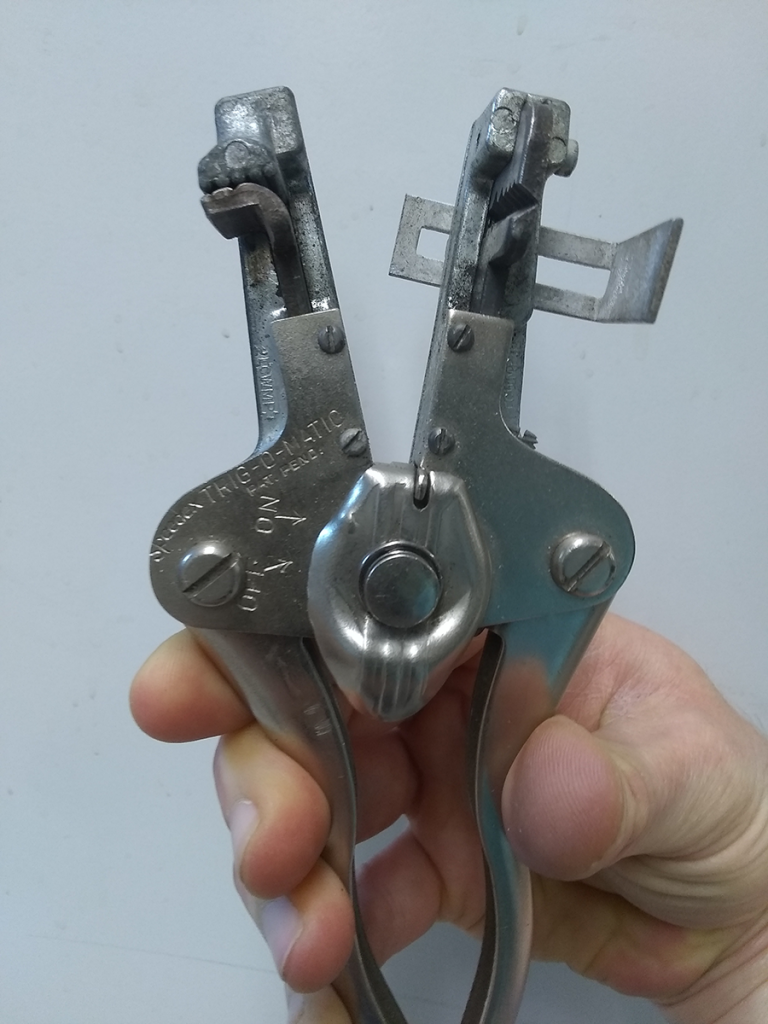
With enough drawers, boxes, bins, and dark corners in our shop and storage rooms, you’re bound to run across the occasional tool that you wish you’d known about sooner. Maybe it’s useful. Maybe it’s fiercely specific. Maybe it’s just a special sort of ingenious. Maybe it’s a pair of squeeze-and-strip wire strippers.
We have several pairs, but only this one is dubbed the Speedex TRIG-O-MATIC. Nothing like a glorious Space Age name to capture that little extra bit of attention.

Feed an insulated wire through the clamps – or several, once you’ve had a bit of practice – up to the adjustable guide. As you start to squeeze the handles, the left-side clamps gently grasp the wires, holding them steady. Then the notched blades close, cutting through the insulation surrounding the wire. The last step in this little dance splits the tool down the center, pulling wire and insulation in opposite directions, effortlessly.

Cleanly stripped wire, courtesy of the two ugliest birds you’ve ever seen. (What two-headed oddity do you see in that picture?)
At this point, you may be wondering when a relatively complicated gizmo like this would be worth having. After all, it has a lot of moving parts, and the more parts something has, the more parts it has that can break. A pair of basic wire strippers, or even just a pair of pliers with wire snips can do the job quickly and cleanly. Right? Well, there are two situations when this little tool is just the bestest thing ever.
1) When a novice needs to strip a few wires and doesn’t need to spend the time (and mistakes) to learn good, practiced technique. We were all there once.
2) When it’s time to put together toy kits for PHYS 212, and all of those lengths of wire* – each with two ends! – need to be stripped and tied. After a while, you get very good at clipping several at once, until it becomes a game to see how many you can manage. Yes, there’s a ceiling.
Toy kits! A subject for a future post: each semester, we put together hundreds of packs for the PHYS 211 and 212 students, full of odds and ends to use for problem sessions. They’re wondrous assortments of odds and ends (and honest-to-goodness toys!) that illustrate the principles of physics through just being neat-o.
* Cutting hundreds of pieces of wire to a specific length is its own problem, and there’s a shop-made solution for that. If you have to do a job a dozen (or a couple hundred) times over, build a jig!